
We don’t have to take boot photos, but they want you to explain in the story why everything is so damn wet”, said a very soggy photographer Alastair Brook through the driver’s window of my MG.
This shoot had started so well. Kicking off on the south bank of the Yarra in Melbourne with patches of blue sky and shafts of warm sunlight, it had ended here, 50km to the south-east at a bleak Cardinia Reservoir, in relentless precipitation and dim greyness.
Credit to Brook for his commitment to snapping the images you see before you, and credit to Canon for making cameras that seemingly function underwater. Originally I figured we’d let the town-and-country theme be a visual metaphor for the dual nature of these cars, but I guess the bipolar Melbourne weather works too.

I should elaborate. This ain’t your average three-SUV battle royale, because these ain’t your average SUVs. Beneath cardigan exteriors, these cars boast both a battery-electric and petrol powertrain, with the ability to either charge their lithium-ion cells from a wall outlet, or travel independently of the power grid by burning a few hydrocarbons. These are plug-in hybrid electric vehicles, or PHEVs, and depending on who you ask they’re either a waste of time, or the best option for getting Australians to transition toward an electrified future.
But with ecological imperatives to ‘go green’ being balanced out by real-world qualms like range anxiety, are PHEVs the panacea? They’ve been in our market for a while now, with the Holden Volt being the first way back in 2012, but it’s only recently that consumers have attained some diversity of choice.
Let’s start with the newest arrival, Mitsubishi’s Eclipse Cross PHEV. Following on from the extensive mid-cycle facelift that rectified the unfortunate rump of Mitsu’s small SUV, the PHEV’s introduction brings a new powertrain alternative to the existing 1.5-litre turbocharged petrol and expands Mitsubishi’s electrically-enhanced line-up to two distinct models.
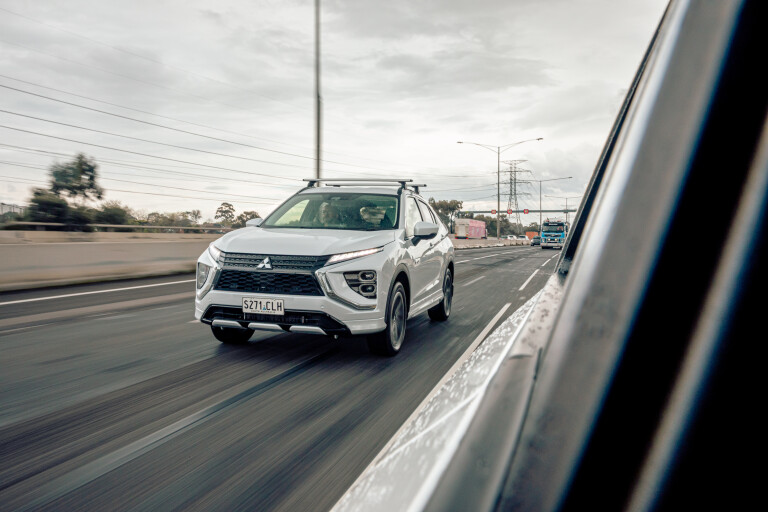
Mitsubishi is something of the incumbent expert in the PHEV field. The triple-diamond brand has had a plug-in hybrid SUV in its showrooms since 2013, in the form of the Outlander PHEV. Sure, to date it’s only accounted for a measly two percent of total Outlander sales in this country, but it could be argued that the overlooked Outlander plug-in was way too early to the PHEV party – it’s only now that the rest of the guests are arriving.
And speaking of, we’ve got a Chinese and a South Korean to provide some competition for the Japanese-made Eclipse Cross.
If the MG HS Plus EV Essence could talk, it would say ‘ni hao’ these days instead of ’allo guvnor. Sourced from China, the MG HS EV actually has one of the most intriguing mechanical packages here, with a 1.5-litre turbocharged inline four (the other two make do with simple naturally-aspirated engines) and electric motor combo sandwiching a six-speed dual-clutch auto and a four-speed epicyclic auto. Complex, but does it work? We’ll find out.
The MG also has the benefit of being the biggest of our three contenders (it’s actually classed as a medium SUV), with the highest power output, the biggest battery and the most affordable pricetag. Those trump cards will be hard to overcome for the other two.
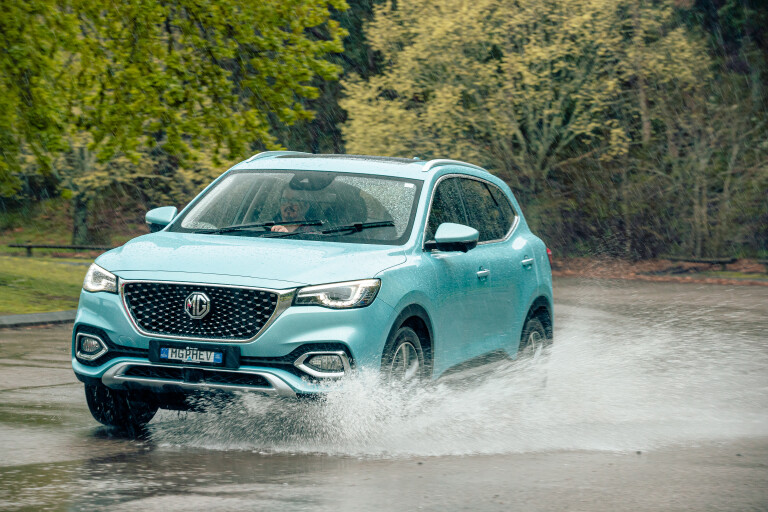
Lastly, it’s the Kia Niro PHEV, here in base-model S trim. The Niro is a Johnny-come-lately, the PHEV version of which launched overseas in 2018 but which only arrived here in mid-2021. An all-new replacement is due by the end of next year so this car’s time in market will be brief, but is it worth a look despite the fact it’s fast approaching retirement?
In terms of price, the MG holds a big advantage. At $47,990 inclusive of on-road costs, it’s exactly two grand cheaper than the much smaller Niro S PHEV, which also boasts a driveaway price. The Mitsubishi sneaks in under the $50K barrier with a $49,990 sticker, but that’s retail – add your relevant on-roads to that, and it becomes a mid-$50K vehicle.
To be fair, though, the Niro is a base model while the Mitsubishi is the mid-spec Aspire – the base Eclipse Cross ES PHEV lobs with a $46,490 retail price that puts it on a more even footing with the Niro S, but one wasn’t available for us to test. The MG, meanwhile, is only available in a single highly specified variant. The MG HS Plus EV Essence wins the value battle before even turning a wheel.
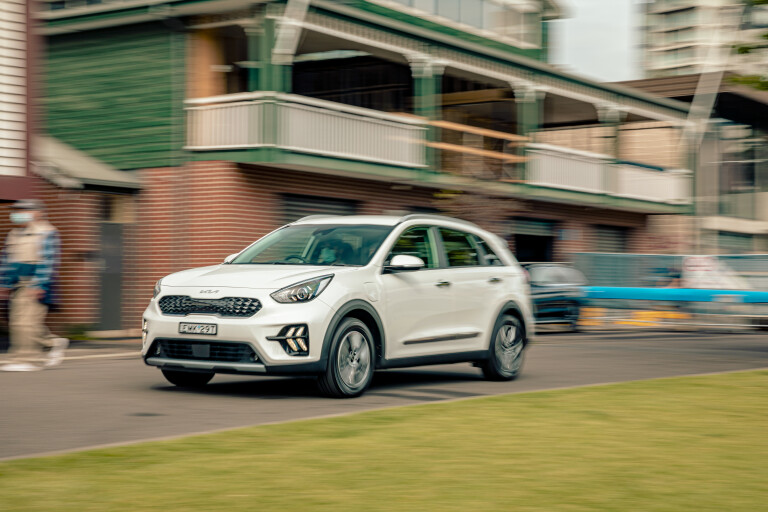
With efficiency in real-world conditions being so central to the PHEV appeal, testing these three requires a fairly rigid methodology to extract meaningful numbers. Each car will start their drive loop with a freshly-charged battery from the same location, then complete a course measuring 98km long that takes in the most even mix possible of suburban 60km/h roads, low-speed inner-city streets, outer-urban cruising and, finally, a continuous stint of steady-state highway driving at 100km/h.
The order of that regime is deliberate, by the way. PHEVs are billed as being a better option for long distance driving than an EV, but odds are if you’re subjecting one to such journeys you’re going to have a depleted battery most of the time. To that end, the highway part of our loop doesn’t commence until a point where every car’s battery should be well and truly at zero percent.
Were the highway portion to be right at the start, it could be dispatched entirely using stored battery energy, with the more sedate urban stuff allowing the cars to avoid aerodynamic drag and lean more heavily on regenerative braking – two things which might artificially sweeten their fuel economy numbers. We can’t allow that.
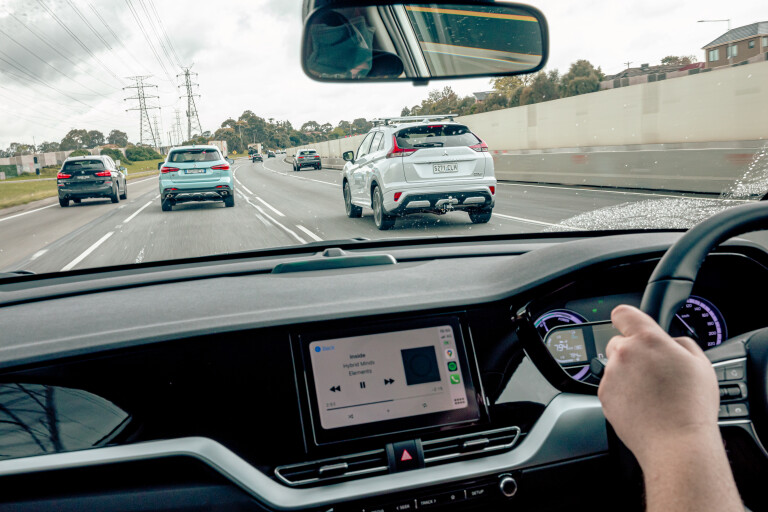
The first car to come off the plug is the MG. Sitting in the driver’s seat, one thing becomes apparent: this feels substantially larger than the Eclipse Cross and Niro. Were this a normal SUV comparo it might seem unfair to put this big boy against rivals from a size class below, but this is more about testing PHEV credentials, not counting cupholders. Time to hit the road.
Crawling out of the driveway, the MG is noisier than expected. At speeds under 25km/h it emits a low moan to warn pedestrians of its presence, but while an audible alert on the outside is a good idea for an otherwise silent SUV, it’s a sound that doesn’t need to be on the inside of the car.
Motor noise is also apparent once you get going, the higher-pitched soft whining a clear signal that you’re consuming electrons, not petrol. However, it’s not an irritating frequency and it’s only really noticeable because everything else – road noise, wind noise, cabin creaks – are virtually nonexistent at urban speed.
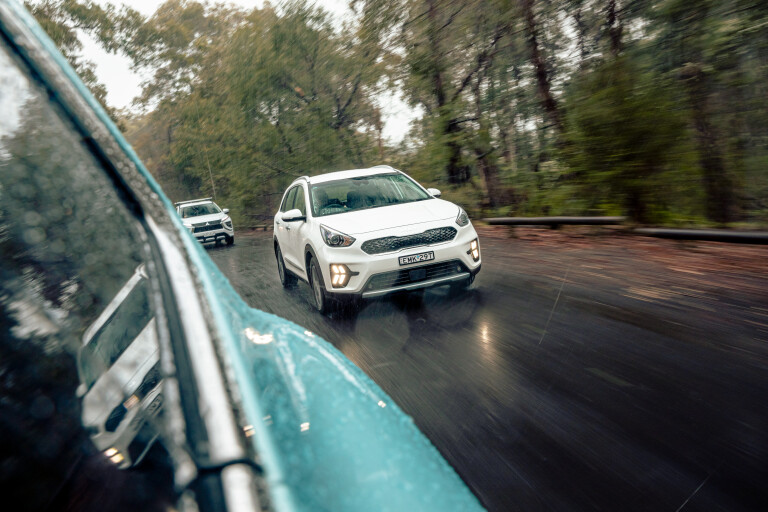
There are other pleasant surprises, too. Flex your ankle and you’ll discover a total system output of 189kW and 370Nm, along with a 0-100km/h sprint of 6.9 seconds – numbers that would have qualified the MG for hot-hatch status not that long ago. It’ll overpower the front wheels at maximum throttle, especially in the wet, and there’s naturally some torque steer to contend with as well, but you wouldn’t expect a mid-size SUV from China to move this swiftly.
It corners smartly, too, thanks to decent suspension geometry and respectable grip from its Michelin Primacy tyres. The HS is the only one to forgo low-resistance eco tyres, and given the torque on offer and the fact that it’s a front-driver only, that’s probably for the best.
But this is an efficiency exercise, and burning rubber isn’t efficient. Locking the MG into electric mode, there’s still 90kW and 230Nm of EV power to play with – more than enough for the suburban grind.
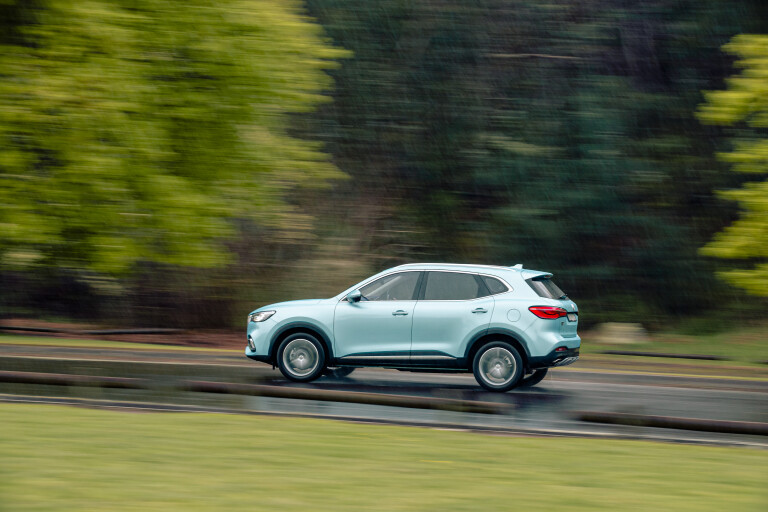
Driven sedately, the MG settles in to commuter duty. Its long-travel suspension has just the right amount of vertical squishiness to cancel out lumpy bits, without being underdamped or roll-happy at speed. The suspension engineers hit the mark with this one.
Steering weight is on the heavy side for a commuter car, but otherwise it steers directly with a strong self-centring feel. Combining all that with the tractability and power of its electric powertrain, and the MG does well on the urban section of the loop.
And while it would readily disregard our desire to keep it in EV mode if it thought we wanted too much acceleration or turned the cabin heat up, it had the longest legs when it came to all-electric driving range. At 66km, mere metres from the onramp to the highway leg, the battery finally clicked over to zero percent and the engine started up. MG claims a battery-only range of 63km, and if we tally up the brief moments that the petrol engine kicked in earlier in the drive, that claim seems to be a very honest one – and possibly even understated.
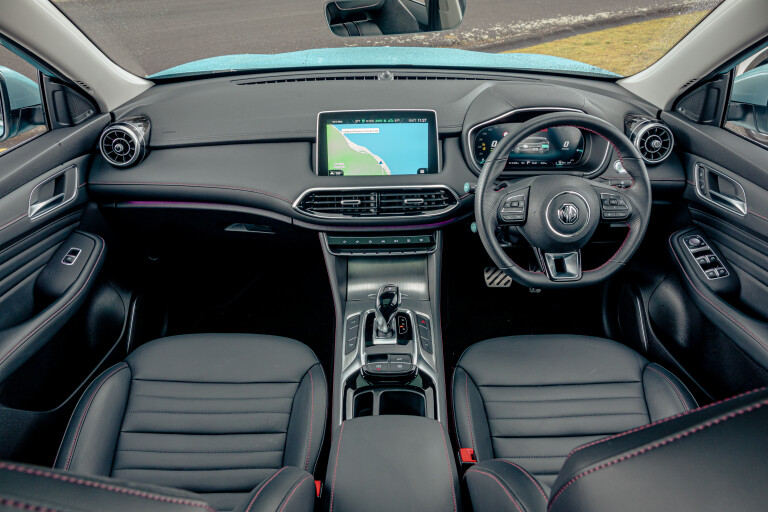
On the highway, some cracks in the facade appear. Its convoluted ‘10 speed’ transmission (shouldn’t a four-speed feeding into a six-speed give you 24 gears?) seems restless, always shifting ratio with minor changes in road gradient. Every few minutes it’ll have banked enough charge in the battery to go back to electric mode, but the handover from the petrol engine to the electric motor is clunky and unrefined.
The petrol engine is also noisy, but at these speeds it’s balanced by road and wind noise, and not really any worse than your typical petrol SUV. Still, there are definitely some smaller details that could do with some finessing.
Rolling back into the driveway where we started, the MG’s trip computer showed an average fuel burn of 2.3L/100km. With nearly all of that petrol being consumed on the 32km highway stretch, its highway-only average comes in around 7.0L/100km. Not bad, but only on par with most conventional SUVs. As for its electrical efficiency, the MG showed an average of 18.6kWh/100km just before the battery ran out.

The Kia is next, and boy does it feel like a different animal. A smaller, less muscular, less interesting animal. Like the MG, it’s reluctant to stay in EV mode, tipping us into hybrid mode constantly, my left index finger threatening to scratch the paint off its drive mode button through constant re-engagement. What’s even more irritating is that EV mode doesn’t actually feel all that different to the regular mode, with the conditions for petrol engine start-up being seemingly identical.
Keeping it electric becomes a matter of carefully nursing the throttle, trying to avoid the invisible tip-over point. Having grown used to the fairly grunty MG, it’s a bit of a challenge, but with a total system output of 104kW and 265Nm the Niro needs its petrol engine running to feel like the MG does with its petrol engine switched off.
That translates to less sprightly performance around town – at least when you’re trying to rely on the battery. That’s not the only point of difference to the MG’s experience either, with the smaller, lighter and lower Niro feeling more like a biggish hatchback than a true SUV. Its steering is more naturally weighted and a better partner for easy daily driving, but the ride is surprisingly firm given the tiny 16-inch alloys and chubby 60-profile sidewalls. It’s almost the inverse of the HS PHEV, actually, with a stiffer ride yet more body roll – and significantly less grip.
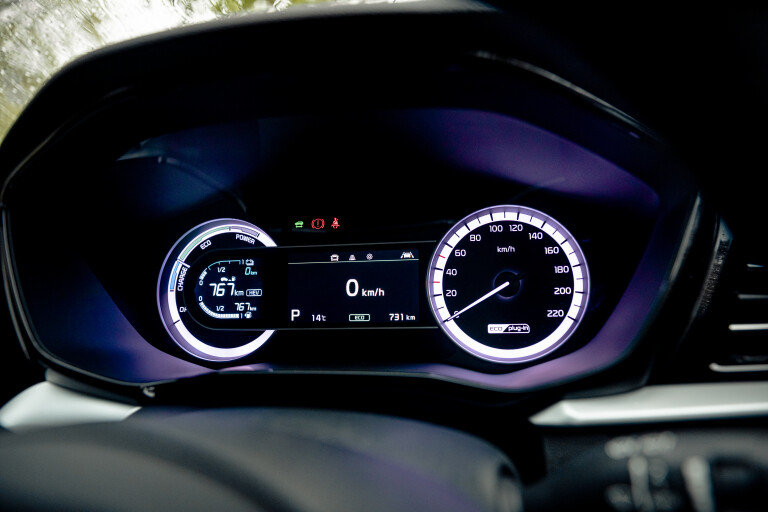
More happily, its fusion of electric and petrol motivation has fewer rough edges. Like the HS PHEV, the Kia sends electric power to its front wheels via a gearbox, but with just a six-speed dual-clutch and better phasing between the petrol engine and electric motor, it’s a smoother thing when running as a hybrid. Feeling it step through the ratios when in pure electric mode is a little odd, but it’s definitely a more refined drivetrain than that of the MG.
However, the Niro’s 8.9kWh battery is almost half the capacity of the MG’s and only 64 percent of the Mitsubishi’s, and it finally refused to re-engage EV mode at the 59.2km mark. Still, that’s appreciably close to the MG’s electric-only distance. How? The Niro weighs more than 200kg less, allowing it to stretch those battery cells further.
On the highway, it’s easy-going, its 1.6-litre petrol humming quietly and cutting in and out as required. Smaller and lighter, it spends more time coasting with the engine off than the other two, and it’s little surprise that it delivered the best overall fuel consumption: 1.9L/100km.
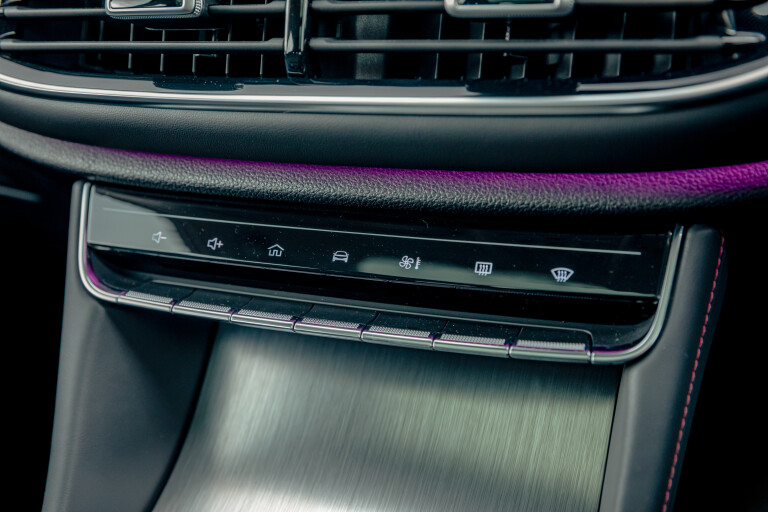
Onward to the Eclipse Cross. Mitsubishi has basically transplanted the electrified gubbins of the Outlander PHEV into the Eclipse Cross, but it’s yielded a respectable result. For starters, this is the only all-wheel drive model here, boasting one motor per axle and enjoying an extra degree of sure-footedness in poor weather or on gravel as a result. After all, what good is a car with go-anywhere styling if it gets stranded on wet grass?
It also has DC fast-charging capability, able to zip to 80 percent charge in just 25 minutes rather than the seven-plus hours for a full charge from a regular wall outlet. Its vehicle-to-grid reverse charging capability (see breakout) has yet to be exploited in Australia, but that feature is at least baked into the car for when our infrastructure catches up. Neither the Kia or the MG have these features.
But it’s also obscenely heavy. At 1890kg with nobody aboard it’s heavier than the MG despite being markedly smaller and having less battery capacity, and we’re willing to bet it’s largely a result of that extra motor and driveline.
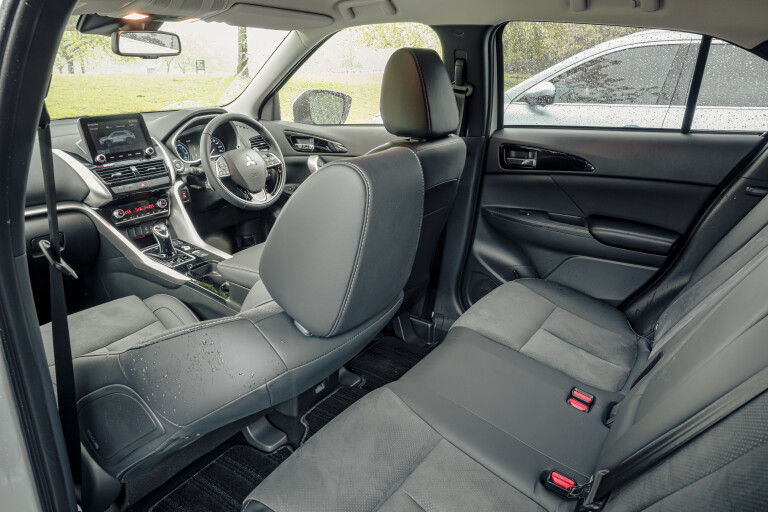
Yet here’s the thing. By default, the Eclipse Cross prefers to be an electric car, not a hybrid. It takes a lot of pedal travel to rouse the 2.4-litre Atkinson-cycle engine, and if you lock it in EV mode it’ll keep that engine quiet all the way up to 135km/h – unless you smash the accelerator through its kickdown switch.
As such, it’s a breeze around town. Its dual electric motors are plenty tractable and drive the wheels directly via a reduction gear, so there’s no transmission shifting to sully the smoothness of the experience, and its steering and ride comfort are well suited to Melbourne’s city streets. With the shortest wheelbase in the group there’s a bit of head-toss as it pitches over things like speed bumps, but otherwise the Eclipse Cross is an agreeable urban partner.
Like the other two, the Mitsubishi also exceeded its factory EV range claim, delivering 58km of (tailpipe) emissions-free motoring. What’s more remarkable is that despite being heavier and having two motors to feed, its average energy consumption in EV mode was significantly lower than the MG, and at 14.5kWh/100km it even undercut the Kia’s 15.01kWh/100km average. It’s less impressive on the highway though, burning around 10.0L/100km when the generator is running, which is most of the time when the battery is depleted. In all, the Mitsubishi averaged 2.8L/100km across the whole loop.
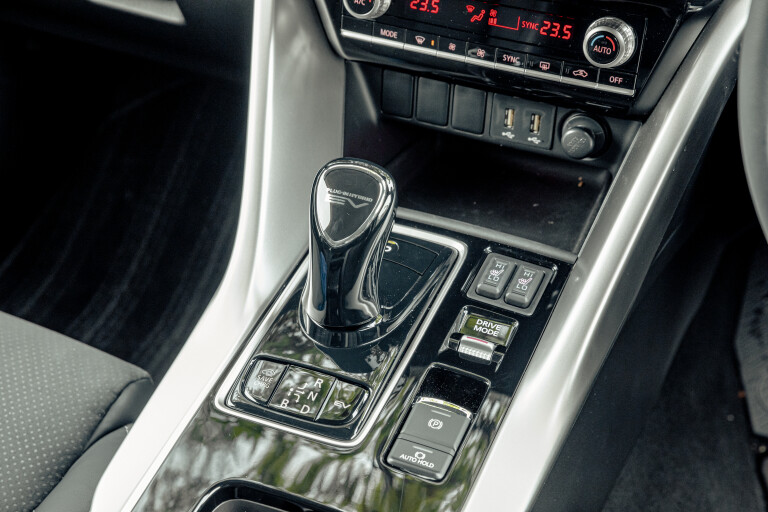
So how does the finishing order look? The MG puts in a very strong showing, with peerless power, heaps of space, the most premium-looking cabin and the most standard equipment at the lowest price point. It rides well, too, an important attribute for a city-bound SUV, but it lacks sophistication when it comes to driveline refinement and noise suppression, and its energy consumption in EV mode was higher than expected. It gets the silver medal.
The Kia Niro is unfortunately outclassed. It feels the smallest yet isn’t the cheapest, the suspension is both too harsh yet not taut enough, its feature set is nothing special and its constant refusal to obey our requests for EV-only driving was frustrating. Here’s hoping that gen-two hits closer to the mark, because gen-one only gets the bronze medal here.
And that leaves the Eclipse Cross PHEV as the winner. As a car that can help you save money while lessening your impact on the environment (subject to your electricity source), the Mitsubishi simply does a better job.
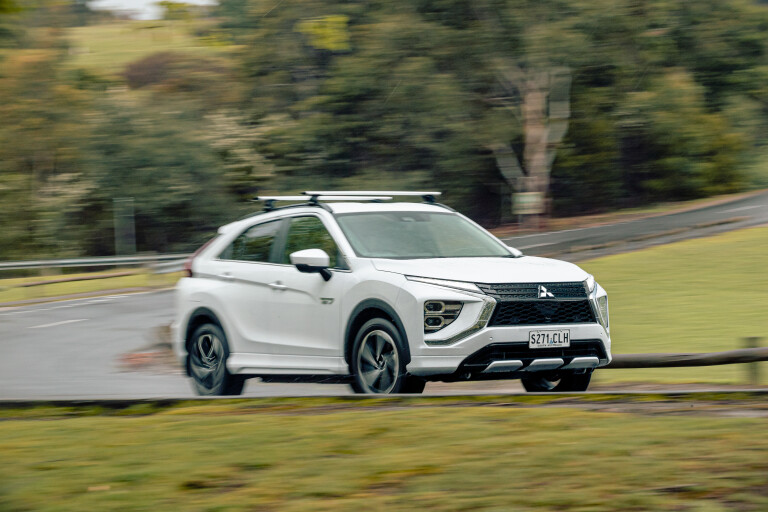
Sure, its on-test fuel consumption was the highest, but with more than enough battery range for the average Aussie’s daily commute, hearing the petrol engine should be an uncommon event. Its preference for electrons over petrol also sets it apart from the MG and Kia, and its very reasonable electricity consumption in EV mode was a pleasant surprise given its weight.
The provision of a DC fast-charging port and vehicle-to-grid capability are arguably the Eclipse Cross PHEV’s ‘killer apps’, boosting both its convenience factor and making it ready for when this country’s power grid catches up to the cutting edge. Its ability to drive all four wheels can’t be ignored either, and the sum of all these advantages gives it a leg-up against the MG.
PHEVs aren’t sexy, but as cars that could potentially make your life that little bit easier and that little bit more affordable, this trio are more than just a halfway point between combustion and full electrification. Life’s full of compromises after all, and sometimes a compromise can be the best thing for you.

Imperfect solutions
IS A PLUG-IN HYBRID A COMPROMISE WORTH MAKING?
The PHEV premise is simple: plug them in frequently and use cheap electricity to do the bulk of your commuting, while the onboard engine plays the role of a glorified generator – there to keep the volts flowing in the instances you need to venture beyond the battery’s range.
On the other hand, a PHEV’s battery is not as big as what you’d get in a dedicated electric car, thanks to the need to package other heavy components like the combustion engine, transmission, exhaust and fuel tank.
As a result, stated electric ranges are in the double-digit region only, but for the commutes where battery power is sufficient, that engine and its ancillaries are just dead weight. So PHEVs are a compromise, but one that might be more palatable than a full EV for many people who regularly drive significant distances each trip.

Interiors in detail
THE CHEAP, CHEERFUL AND COMPROMISED
1. MG HS PLUS EV ESSENCE
MG brand still favours its, er, ‘VW-inspired’ steering wheel and Audi A3-style gimbal air vents, but material quality and seat comfort on those sporty-looking front seats is actually pretty good. The driver’s seat is mounted quite high, even at its lowest setting, but outward vision is commanding and that panoramic sunroof and electronic instrument panel are standard-issue.
2. KIA NIRO S PHEV
Niro has the most demure cabin here, with too much piano black plastic, ordinary cloth/pleather upholstery and cabin styling that no longer matches up with its more modern stablemates in the Kia showroom. That rear seat is acceptable, though the boot is rather small for an SUV.
3. MITSUBISHI ECLIPSE CROSS PHEV ASPIRE
There’s good accommodation up front, but an unsupportive back seat and a short wheelbase – that penalises interior room – means the Eclipse Cross is better suited as a car for couples, not families. Funky gear selector handle and PHEV-specific instruments are your only clues that you aren’t in a regular Eclipse Cross Aspire.
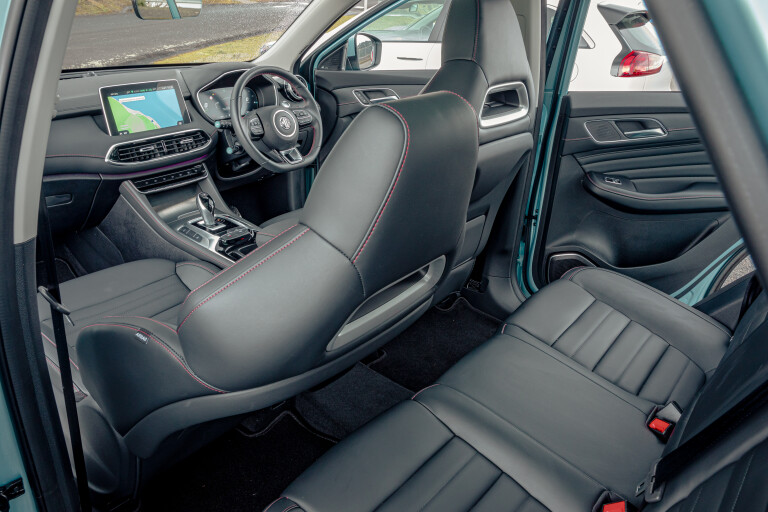
V2G explained: The new reverse charge
V2G, or vehicle-to-grid charging, might seem like a bizarre idea, but by feeding energy stored in vehicle batteries back into the power grid, privately-owned electric cars and PHEVs could help electricity suppliers deliver a more reliable service by using vehicular energy during periods of peak demand – which could provide car owners with a little bit of passive income whenever their cars are parked.
It could be utilised at the residential level, too, with residual battery power used to power your home during the evening before cheaper off-peak power is used to charge it back up again. If widespread EV adoption is going to ever happen, the power grid is going to need all the help it can get, and V2G tech is one way of doing exactly that.
Scoring and specs
MITSU. ECLIPSE CROSS PHEV: 8/10
MG HS PLUS EV ESSENCE: 7/10
KIA NIRO S: 6/10
| MITSU. ECLIPSE CROSS PHEV | MG HS PLUS EV ESSENCE | KIA NIRO S | |
|---|---|---|---|
| $49,990/ Tested $49,990 | $47,990 (DA, as tested) | $49,990 [DA, as tested] | |
| DRIVETRAIN | |||
| Engine | 4cyl, dohc, 16v | 4cyl, dohc, 16v, turbo | 4cyl, dohc, 16v |
| Layout | front engine (east-west) AWD | front engine (east-west) FWD | front engine (east-west) FWD |
| Capacity | 2360cc | 1984cc | 1580cc |
| Power | 94kW @ 4500rpm (ICE) | 189kW @ NA | 104kW @ 5700rpm |
| Torque | 199Nm @ 4500rpm (ICE) | 370Nm @ NA | 265Nm @ 4000rpm |
| Gearbox | Single-speed reduction | 6-speed DCT, 4-speed auto | 6-speed dual-clutch |
| CHASSIS | |||
| Body | steel, 5 doors, 5 seats | steel, 5 doors, 5 seats | steel, 5 doors, 5 seats |
| L/W/H/W–B | 4545/1805/1685/2670mm | 4574/1876/1685/2720mm | 4355/1805/1545/2700mm |
| Track (F/R) | 1540/1540mm | 1541/1550mm | 1565/1579mm |
| Weight | 1890kg | 1775kg | 1564kg |
| Boot | 359L | 451L | 324L |
| Fuel | petrol/45 litres | petrol/50 litres | petrol/43 litres |
| Economy | 2.8L/100km (as tested) | 2.3L/100km (as tested) | 1.9L/100km (as tested) |
| Suspension | Front: struts, coil springs, anti-roll bar. Rear: multi-links, coil springs, anti-roll bar | Front: struts, coil springs, anti-roll bar. Rear: multi-links, coil springs anti-roll bar | Front: struts, coil springs, anti-roll bar. Rear: multi-links, coil springs, anti-roll bar |
| Steering | electric rack-and-pinion | electric rack-and-pinion | electric rack-and-pinion |
| Front brakes | 310mm ventilated discs | 312mm ventilated discs | 280mm ventilated discs |
| Rear brakes | 290mm solid discs | 304mm solid discs | 284mm solid discs |
| Tyres | Bridgestone Ecopia H/L 422 Plus | Michelin Primacy 35T | Michelin Energysaver |
| Tyre size | 225/55 R18 | 235/50 R18 | 205/60 R16 |
| SAFETY | |||
| ANCAP rating | 5 stars (2017) | NA | 5 stars (2021) |
| PERFORMANCE | |||
| EV Range | 55km (claimed), 58km (tested) | 63km (claimed), 66km (tested) | 56km (claimed), 59.2km (tested) |
| Battery | 13.8kWh | 16.6kWh | 8.9kWh |
| Motor | 60kW/137Nm (f); 70kW/195Nm (r) | 90kW/230Nm | 44.5kW/170Nm |
| 0-100km/h | 10.9sec (claimed) | 6.9sec (claimed) | NA |
| Warranty: 5yr/100,000km Service interval: 12 months/10,000km Glass’s 3-year resale: NA AAMI Insurance: $1020/yr | Warranty: 7yr/unlimited km Service interval: 12 months/10,000km Glass’s 3-year resale: NA AAMI Insurance: $1063/yr | Warranty: 7yr/150,000km Service interval: 12 months/15,000km Glass’s 3-year resale: NA AAMI Insurance: $963/yr |

COMMENTS